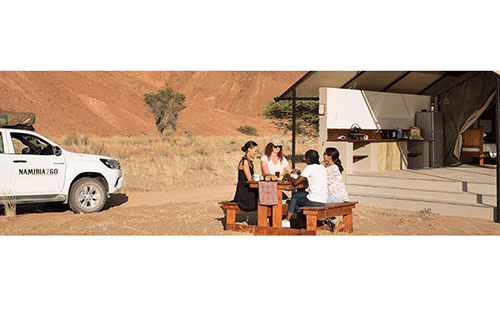Leisure travel continued to be a significant driver of occupancy rates at Namibian accommodation establishments.
This is according to the Hospitality Association of Namibia (HAN), whose latest figures indicate that in October 2023, 89.6% of occupancy was attributed to leisure travellers, while business travellers accounted for 9.9%, representing a slight decrease from the 10.1% reported in September 2023 but a substantial increase, compared to the 2.7% rate observed in October 2022.
Conference travellers, however, comprised only 0.4% of occupancy in October 2023, down from 1.2% in September 2023.
In dissecting these figures, stock brokerage, Simonis Storm (SS), concluded the Namibian tourism sector remains a vital contributor to the country’s economy, establishing significant connections with other industries and serving as a crucial driver of job creation.
“Given its reliance on Namibia’s abundant unskilled labour, the tourism sector emerges as a viable solution to address high unemployment rates, particularly in rural areas. Consequently, as the holiday season approaches, we anticipate the tourism industry to continue bolstering local economic activity for the remainder of the year,” reads an SS hospitality report released in November.
SS added that the collaboration between Namibia Wildlife Resorts (NWR) and Germany’s Inter-Cultural Relations Foundation, bringing in 100 apprentices, led by Joachim Keferstein, is expected to significantly benefit the domestic hospitality industry.
“Beyond addressing maintenance needs, this partnership strengthens diplomatic ties, facilitates skills transfer and promotes cultural exchange between international apprentices and local staff. The phased arrival of apprentices, which started on 26 October 2023, ensures a structured and lasting impact on NWR resorts across Namibia. This initiative demonstrates a forward-thinking approach, contributing to the industry’s growth and international appeal,” the SS report.
The SS report adds that Namibia’s hospitality sector exhibited resilience in October 2023, with national occupancy rates holding steady at 65.5%, consistent with the figures reported in September 2023. This marked an improvement from the 54.6% occupancy rate recorded in October 2022.
The SS report further noted that the majority of guests at Namibian hospitality establishments predominantly hail from Europe, with Germany, Switzerland and Austria collectively constituting the largest share of international tourist arrivals at 42.3%.
“Notably, these countries contribute significantly to the diverse visitor landscape. France follows closely behind, accounting for 7.4% of the total international tourist arrivals. At a regional level, South Africa is noteworthy, representing 4.4% of the aggregate guest composition in hospitality establishments throughout Namibia,” SS pointed out.
Meanwhile, HAN figures indicated that in October 2023, the coast emerged with the highest occupancy rate, reaching an impressive 71.9%.
“This marks a significant milestone, as it is the first time the rate has surpassed 70% since October 2018. Following closely behind, the northern area maintained a robust rate of 69.2%, having led for two consecutive months. In comparison, the southern and central areas recorded rates of 62.1% and 60.8%, respectively.
“These statistics vividly highlight the variations in tourism demand across these regions, with the coastal and northern areas standing out as the most favoured destinations among tourists in October 2023,” SS reported.
The latest data from the (World Tourism Organisation – UNWTO) indicates a robust start to international tourism recovery in 2023. During the first quarter, international arrivals reached 80% of pre-pandemic levels with 235 million tourists, double the number from the same period in 2022.
“The tourism sector has shown resilience, with 66% of pre-pandemic numbers recovered in 2022. The Middle East outperformed other regions, exceeding 2019 arrivals by 20%. International tourist arrivals in Africa remain 8% - below levels recorded in 2019 – as a significant improvement from international tourist arrivals recorded in 2022 during the same period,” SS
stated.
UNWTO secretary general Zurab Pololikashvili pointed out the industry’s ability to bounce back but emphasised challenges like geopolitical insecurity, staffing shortages and the cost-of-living crisis.
“Looking ahead, the first quarter of 2023 results align with UNWTO’s projections of a recovery between 80% and 95% of pre-pandemic levels for the year,” SS added.


